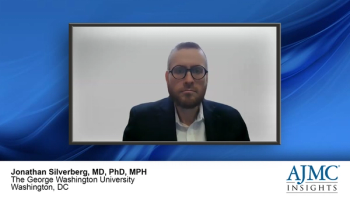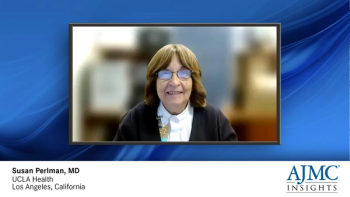
A panel of experts examines the impact of cardiometabolic diseases in the United States, focusing on their burden, prevalence, and relationship to obesity.

A panel of experts examines the impact of cardiometabolic diseases in the United States, focusing on their burden, prevalence, and relationship to obesity.

Reynold A. Panettieri Jr., MD, examines the application of biologic therapies in the treatment of respiratory conditions.

Jonathan Silverberg, MD, PhD, MPH, evaluates persistent unmet needs in the field and highlights promising new treatments currently under development.

A key opinion leader explores new and promising treatment approaches for managing advanced stages of Friedreich ataxia.

A key opinion leader explores therapeutic approaches targeting inflammation to alleviate symptoms in COPD and asthma patients.

An expert in COPD delves into biomarkers indicative of type 2 inflammation and recommends diagnostic tests for assessing inflammation in COPD patients.

A physician examines clinical trial results that impact their approach to treating patients with Friedreich ataxia.

A key opinion leader examines how the introduction of biologic therapies revolutionized atopic dermatitis treatment, addressing strategies to manage patients' concerns about needles and injections.

A dermatologist outlines the limitations and obstacles encountered with current therapeutic options for treating dermatologic conditions.

A key opinion leader outlines common adverse events associated with omaveloxolone treatment in Friedreich's ataxia patients and describes strategies used to manage or minimize these adverse effects.

The panelists provide their closing thoughts, highlighting key considerations around biosimilar.

A key opinion leader in dermatology explains how the presence of type 2 inflammation informs their treatment decisions for atopic dermatitis and prurigo nodularis, while also detailing additional patient-specific factors such as age, comorbidities, and disease severity that influence their therapeutic approach.

A dermatologist explores the underlying type 2 inflammatory pathway linking atopic dermatitis and prurigo nodularis, highlighting specific biomarkers that aid in identifying patients with type 2 inflammation-driven dermatologic conditions.

An expert in Friedreich's ataxia evaluates the mFARS (modified Friedreich's Ataxia Rating Scale) measurement tool, highlighting its advantages and limitations, while also exploring alternative assessment methods for tracking disease progression.

The expert panel discuss the importance of legislative support to continue innovations in the biosimilar space.

The expert panel discuss future trends in the biosimilar space.

Reynold A. Panettieri Jr., MD, elaborates on the risks of lung damage resulting from exacerbations, with a focus on the role of type 2 inflammation in triggering these events.

A key opinion leader examines the etiology of asthma and potential risk factors for COPD development, emphasizing the role of environmental exposures.

A key opinion leader examines the November 2022 guidelines for managing Friedreich's ataxia, discusses the first FDA-approved therapy for the condition, and explains how this treatment is integrated into current disease management strategies.

The panel discusses ideal goals for biosimilar utilization.

Dr. Tichy discusses unmet needs he deems crucial for the continued uptake of biosimilars.

Key opinion leaders explore molecular characteristics beyond mutations that influence immunotherapy response in non small cell lung cancer treatment.

The panel of experts in lung cancer examines genetic alterations affecting treatment response and biomarker testing rates in metastatic non-small cell lung cancer (mNSCLC).

Jonathan Silverberg, MD, PhD, MPH, examines the significant effects of chronic skin conditions such as atopic dermatitis and prurigo nodularis on patients' well-being, emphasizing the crucial role of prompt diagnosis in managing these impactful dermatologic diseases.

Critical voids in the management of idiopathic pulmonary fibrosis are discussed by Justin Oldham, MD, MS.

The panel explores how IPF affects patient productivity and its contribution to the disease's overall economic burden.

Decision-making factors surrounding optimal IPF treatment selection are evaluated by Justin Oldham, MD, MS.

An expert on idiopathic pulmonary fibrosis describes the therapeutic response of standard-of-care treatments and how multidisciplinary care can be optimized when treating patients.

Justin Oldham, MD, MS, discusses the current standard of car in treating idiopathic pulmonary fibrosis and the role of non-pharmacologic therapies.

Dr Nathan provides his final thoughts regarding IPF management.

259 Prospect Plains Rd, Bldg H
Cranbury, NJ 08512
© 2025 MJH Life Sciences®
All rights reserved.
